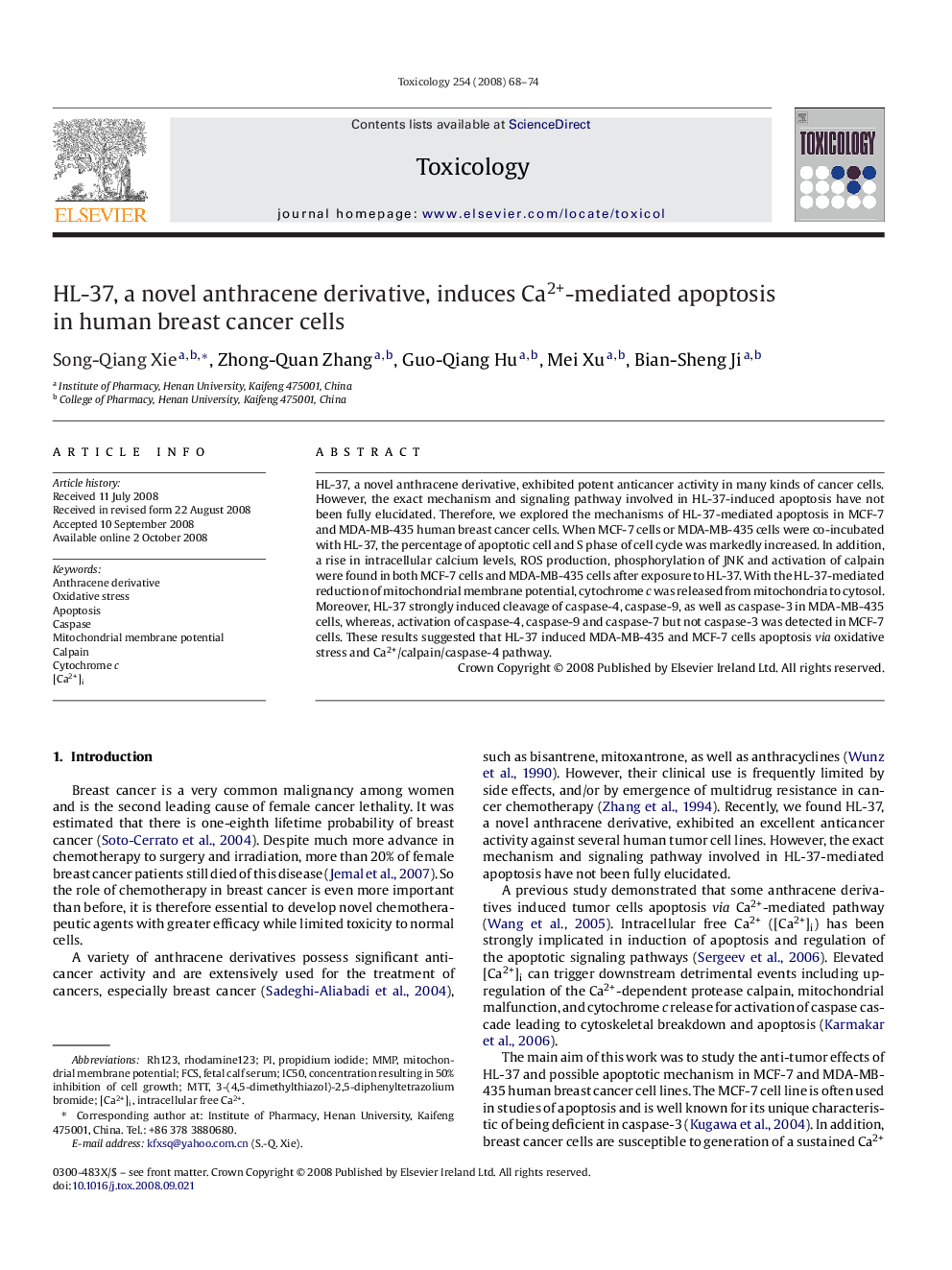| Article ID | Journal | Published Year | Pages | File Type |
|---|---|---|---|---|
| 2596946 | Toxicology | 2008 | 7 Pages |
Abstract
HL-37, a novel anthracene derivative, exhibited potent anticancer activity in many kinds of cancer cells. However, the exact mechanism and signaling pathway involved in HL-37-induced apoptosis have not been fully elucidated. Therefore, we explored the mechanisms of HL-37-mediated apoptosis in MCF-7 and MDA-MB-435 human breast cancer cells. When MCF-7 cells or MDA-MB-435 cells were co-incubated with HL-37, the percentage of apoptotic cell and S phase of cell cycle was markedly increased. In addition, a rise in intracellular calcium levels, ROS production, phosphorylation of JNK and activation of calpain were found in both MCF-7 cells and MDA-MB-435 cells after exposure to HL-37. With the HL-37-mediated reduction of mitochondrial membrane potential, cytochrome c was released from mitochondria to cytosol. Moreover, HL-37 strongly induced cleavage of caspase-4, caspase-9, as well as caspase-3 in MDA-MB-435 cells, whereas, activation of caspase-4, caspase-9 and caspase-7 but not caspase-3 was detected in MCF-7 cells. These results suggested that HL-37 induced MDA-MB-435 and MCF-7 cells apoptosis via oxidative stress and Ca2+/calpain/caspase-4 pathway.
Keywords
Related Topics
Life Sciences
Environmental Science
Health, Toxicology and Mutagenesis
Authors
Song-Qiang Xie, Zhong-Quan Zhang, Guo-Qiang Hu, Mei Xu, Bian-Sheng Ji,
